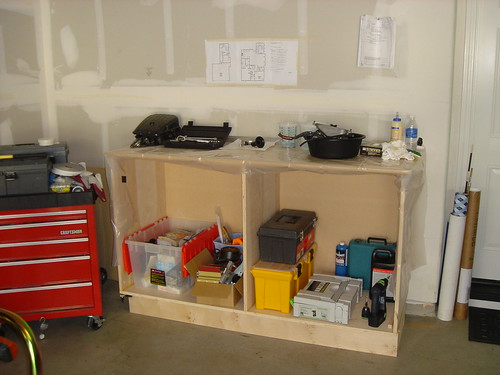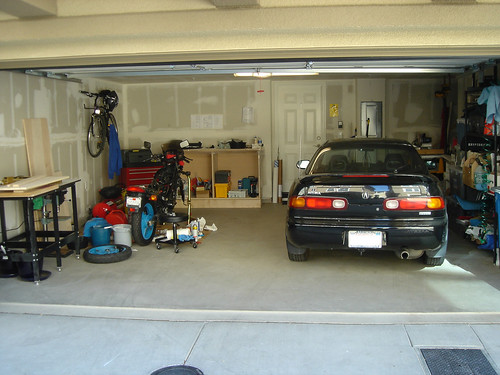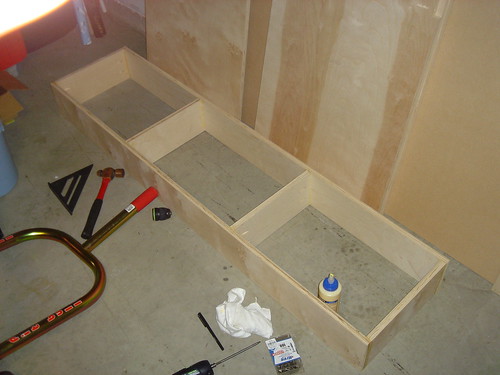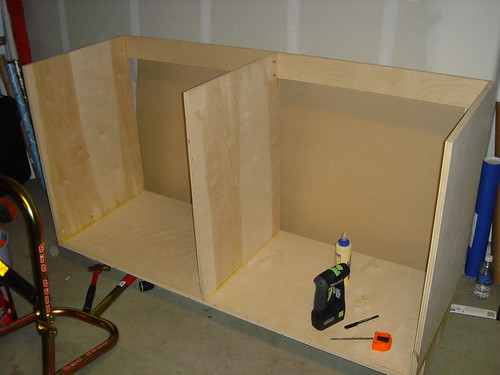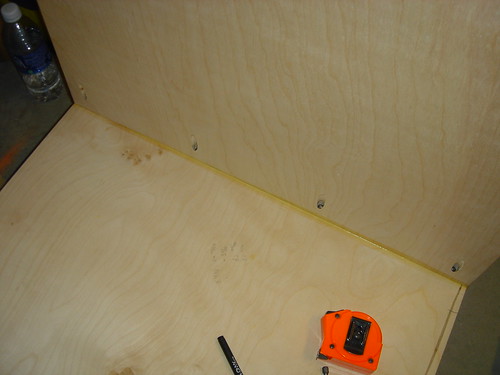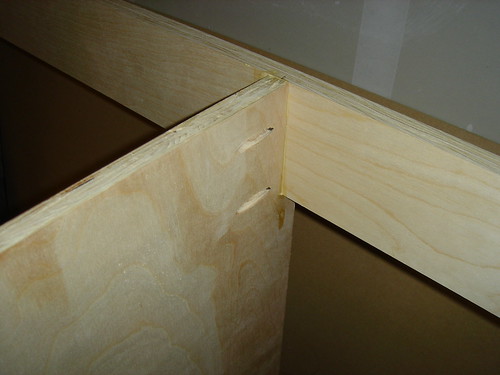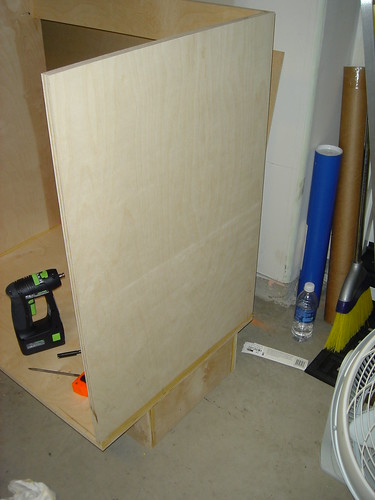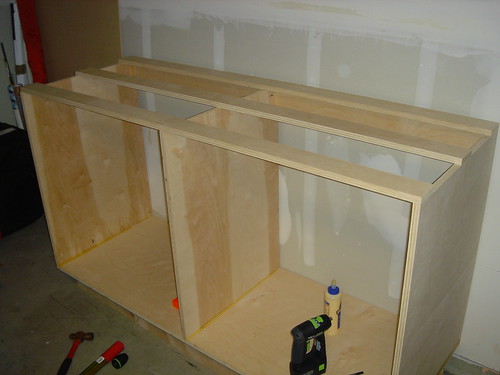Not sure if I'm just procrastinating, but as I was working on the eBike's carbs this week, I realized I really needed a workbench in the garage. I'd been planning to put one in, something that went along part of the back wall, around the corner, and down the side a bit. Tired of hunching over the carbs on the floor, I finally decided I should build something this weekend.
The vision is something like this (although I may not bother with the upper cabinets; we'll see):
I realize what you'll see below doesn't look anything like that, but it will. Someday.
I spent a good five hours (and $280) at Sawdust Shop cutting the pieces for the carcasses of 1.5 workbench-cabinets. I've partially assembled one of them tonight, but I'm done for the day. I'll finish it in the morning, and hopefully make some real progress on the carbs.
Here's a wide shot of the left half of my garage. You can see the beginning of the pedestal near the back wall.
The completed pedestal. I was originally going to just hang the cabinet-workbench from the wall, but the expert at Sawdust Shop convinced me to build a pedestal. This will support much more weight more effectively:
Here the three walls have been screwed in:
A closer view of the pocket screws:
The rear nail strip is fasten to the carcass with pocket screws:
Here's more detail on how the pedestal sits under the cabinet. The floor is pretty heavily sloped, so I will have to shim things up. The wall seems to be plumb, though, which is good.
I rested the top nail strips and work surface on top. Tomorrow I'll glue and fasten them down properly, but this gives you an idea of how it'll look.

